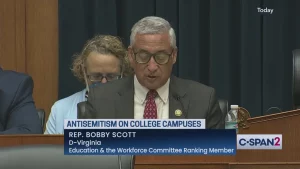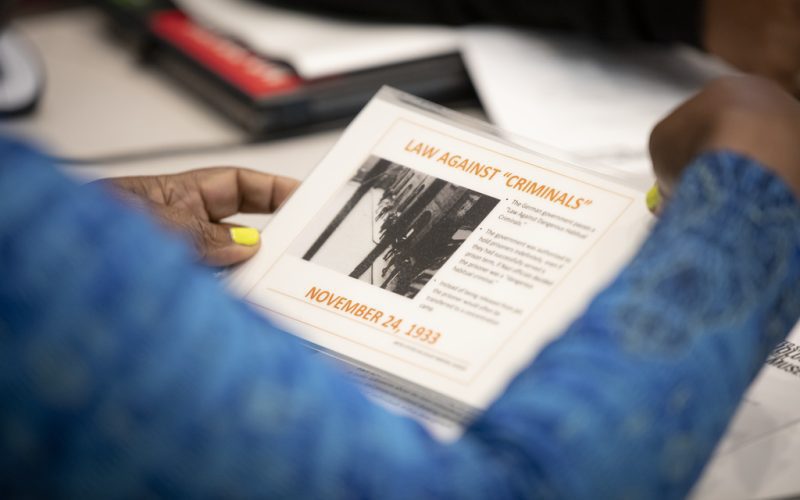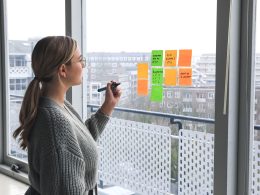Introduction
Antisemitism, the prejudice or discrimination against Jewish individuals, has deep historical roots and continues to manifest in various forms today. To explore this complex issue, we turn our attention to the perspectives of students hailing from diverse backgrounds. Their experiences, insights, and proposed solutions offer a comprehensive view of combatting antisemitism in contemporary society.Antisemitism remains a persistent and concerning issue affecting communities worldwide. In this article, we delve into the multifaceted nature of antisemitism through the lens of diverse student perspectives. By examining personal experiences, historical contexts, and contemporary challenges, we aim to shed light on the ways in which students from various backgrounds perceive, understand, and combat antisemitism. From discussing educational initiatives to fostering interfaith dialogues, these voices illuminate strategies for addressing and eradicating antisemitic attitudes and behaviors. By amplifying these student perspectives, this article seeks to unravel the complex fabric of antisemitism. It recognizes that the experience of this bigotry is not monolithic but a prism refracted through the distinct lenses of cultural, religious, and ethnic diversity. Each voice contributes a unique hue to this collective narrative, shedding light on the myriad ways in which antisemitism shapes lives and the strategies employed to confront and dismantle it. Through these student narratives, we aim to traverse both historical echelons and contemporary landscapes, exploring the echoes of past atrocities and the modern nuances of antisemitism. This exploration is not merely a reflection on the past or present; it serves as a clarion call for action, advocacy, and education to forge a future where antisemitism finds no harbor.

Personal Experiences and Perceptions
Students from different cultural, religious, and ethnic backgrounds often encounter antisemitism in distinct ways. Some may witness it through overt acts of hatred, while others confront subtler forms, such as microaggressions or stereotypes. By sharing their personal encounters with antisemitism, students provide valuable insights into how this prejudice affects individuals on a day-to-day basis. For instance, a Muslim student might discuss their efforts in challenging misconceptions about Judaism within their community, aiming to foster understanding and combat prejudice. Likewise, a Jewish student might share experiences of facing discrimination on campus and efforts to raise awareness about the importance of combating antisemitism. Our perceptions can also be influenced by cognitive biases, societal norms, and the media. Being aware of these influences can help us critically analyze our perceptions and understand that they might not always align with reality. In essence, personal experiences contribute significantly to the formation of our perceptions, guiding our understanding of the world and influencing our decisions and interactions with others. These experiences and perceptions are fluid and can evolve as we gain new insights and encounter new situations throughout our lives.

Historical Context and Contemporary Challenges
Understanding the historical context of antisemitism is crucial in comprehending its persistence in modern times. Students can explore historical events such as the Holocaust, pogroms, and other instances of systemic discrimination against Jewish populations. By examining these events and their impact on shaping current attitudes, students can highlight the importance of learning from history to prevent the recurrence of antisemitism. Moreover, students can address contemporary challenges, including the rise of online hate speech and the spread of conspiracy theories targeting Jewish communities. Analyzing these challenges from diverse perspectives allows for a more nuanced understanding of the multifaceted nature of antisemitism in the digital age.

Strategies for Combatting Antisemitism
In response to the prevalence of antisemitism, students propose various strategies for combatting this pervasive issue. Educational initiatives within schools and universities emerge as a common theme, focusing on promoting tolerance, diversity, and understanding among peers. Additionally, fostering interfaith dialogues and collaborations becomes integral in bridging gaps between different religious and cultural groups. By promoting mutual respect and solidarity, students aim to create inclusive environments that reject antisemitic beliefs and behaviors.

Table Detail
| Section | Description |
|---|---|
| Introduction | Setting the stage, highlighting the persistence of antisemitism, and the importance of diverse student perspectives |
| Personal Experiences and Perceptions | Sharing anecdotes and insights from students of various backgrounds on encountering antisemitism |
| Historical Context and Challenges | Exploring historical events and contemporary challenges contributing to the prevalence of antisemitism |
| Strategies for Combatting Antisemitism | Discussing proposed solutions and strategies by students to address and eradicate antisemitism |
| Conclusion | Summarizing the diverse perspectives and collective call to action against antisemitism |

Conclusion
The diverse and impassioned voices of students from various backgrounds collectively echo a resounding call to action against the scourge of antisemitism. As the narratives interweave personal experiences, historical reckonings, and contemporary challenges, they paint a vivid panorama of the multifaceted nature of this enduring prejudice. These perspectives serve as potent reminders of the far-reaching implications of antisemitism, transcending geographical boundaries and cultural contexts. They underscore the critical importance of acknowledging and confronting this bigotry, not only as a matter of moral imperative but as a safeguard for societal harmony and progress. The shared experiences unveiled within these pages bear witness to the resilience and determination of individuals affected by antisemitism. They exemplify the unwavering commitment to combatting prejudice and discrimination, fostering environments of inclusivity, understanding, and tolerance. Moreover, the strategies proposed by these diverse voices reflect a collective resolve to effect meaningful change. From educational initiatives nurturing empathy and awareness to fostering interfaith dialogues that bridge divides, these approaches form the cornerstone of a united front against antisemitism .In the symphony of these varied perspectives, we find hope a hope that through unity and concerted effort, we can forge a world where every individual, regardless of creed or background, thrives in an environment free from the blight of antisemitism.












